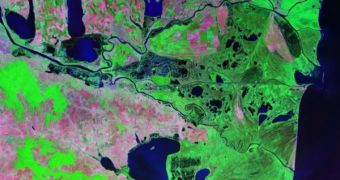The Black Sea, located in Eastern Europe, south of Russia and north of Turkey, was thought to hold some of the answers researchers studying the flood myths that occured in most civilizations were looking for. Now, new data gathered from the delta of the Danube River, which pours itself into the Black Sea, shows that the water levels 9,500 years ago were 30 meters below current ones, rather than 80 meters below, as previous studies suggested. The find is very important, because it highlights the shortfalls of a theory meant to explain why Noah's myth appeared.
More than 9,500 years ago, the shores of the Black Sea, now occupied by Romania, Ukraine and Russia, were home to early Neolithic settlements. People had found a perfect place to live, and societies began to develop.
But the Black Sea, which at the time was a lake, separated from the Mediterranean Sea by the Bosphorus sill, suddenly came crushing over them when the sill broke, and water from the Mediterranean poured in. The massive flood that followed is believed to have displaced the population on the shores, driving them westwards, into central Europe and towards Asia.
According to previous studies, sea levels grew by 80 meters instead of 30, and the ensuing tsunami-like wave wiped out most of the population, and gave birth to Noah's myth among survivors. Nevertheless, this refutes other claims saying that Noah's ark is situated atop a mountain in Turkey. There is no possible way the flood in the north and the west of the Black Sea could have reached the Muslim country.
"It's amazing. The early delta was forming in a fresh water lake just a couple of hundred years before the flood. And after the flood you have these marine deposits overlaying the whole delta region," Woods Hole Oceanographic Institution (WHOI) Geology and Geophysics Department geologist Liviu Giosan, who has conducted several drills at the mouth of the Danube, says.
At the depth of 42 meters, he and his team have come across fine marine sediments above earlier delta mud, meaning that they have discovered the time of the flood. After that threshold, the marine sediments disappeared, and made way for those regularly found in a delta, which are forming even today.

 14 DAY TRIAL //
14 DAY TRIAL //